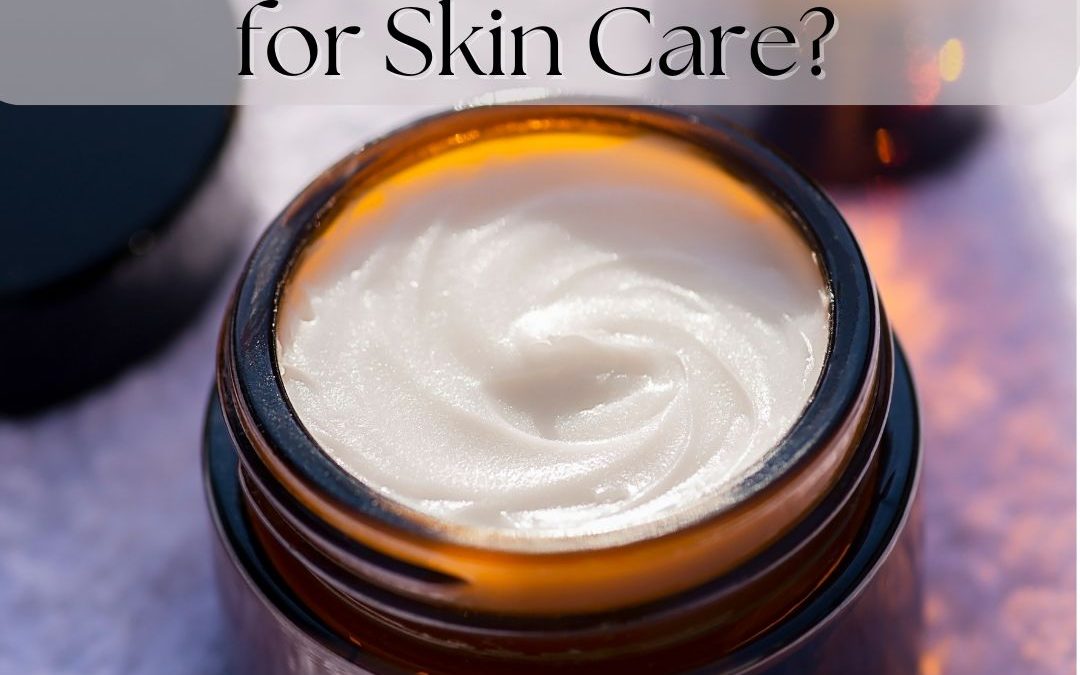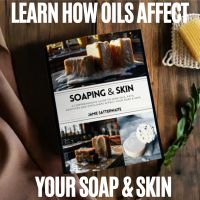This post may contain affiliate links, to learn more about them, check out our Disclosure.
If you’re exploring natural, sustainable options for skincare, you may have encountered two traditional fats: lard and tallow. Both are animal-derived and have been used for centuries in balms, soaps, and moisturizers. But what sets them apart? Let’s dive into their differences, pros and cons, and how each benefits your skin.
What Are Lard and Tallow?
- Lard: Rendered fat from pigs. Known for its soft, creamy texture and high oleic acid content, lard is deeply moisturizing and gentle on the skin.
- Tallow: Rendered fat from beef or mutton. With a firmer, more waxy texture, tallow is rich in vitamins and nutrients that promote skin repair and protection.
While both are excellent for skincare, their unique properties make them suitable for different skin types and uses.
Lard in Skin Care
Lard, with its soft texture and similarity to human sebum, is a hidden gem for dry and sensitive skin.
Benefits of Lard for Skin
- Deep Moisturization: Lard is high in oleic acid, which is similar to the natural oils in our skin. This makes it highly effective at hydrating and softening dry or flaky skin.
- Gentle on Sensitive Skin: Its soothing properties make it suitable for conditions like eczema or rosacea.
- Natural Emollient: Lard creates a lightweight barrier that locks in moisture without feeling greasy.
Pros of Lard in Skincare
- Smooth, creamy texture that’s easy to apply.
- Ideal for lightweight, hydrating products.
- Affordable and readily available.
Cons of Lard in Skincare
- Less shelf-stable than tallow due to its higher oleic acid content.
- May have a faint pork-like odor, depending on how it’s rendered.
- Not as protective or heavy-duty as tallow.
Tallow in Skin Care
Tallow has a long history in skincare, prized for its nutrient density and protective properties.
Benefits of Tallow for Skin
- Rich in Nutrients: Tallow is packed with vitamins A, D, E, and K, which nourish and repair the skin.
- Protective Barrier: Its higher saturated fat content creates a breathable layer that protects the skin from environmental stressors.
- Skin Repair and Elasticity: Tallow promotes collagen production, helping to restore skin elasticity and reduce fine lines.
Pros of Tallow in Skincare
- Long shelf life due to its stable fat composition.
- Ideal for making rich, protective balms and creams.
- Perfect for repairing damaged or aging skin.
Cons of Tallow in Skincare
- Heavier texture, which may feel greasy on oily or acne-prone skin.
- Harder to spread compared to lard, requiring blending with oils.
- Slightly more expensive in some regions.
Key Differences Between Lard and Tallow for Skin Care
| Feature | Lard | Tallow |
|---|---|---|
| Texture | Soft and creamy | Firm and waxy |
| Absorption | Absorbs easily into the skin | Creates a protective barrier |
| Nutrient Density | Moderate | High (vitamins A, D, E, K) |
| Best For | Dry, sensitive skin | Dry, aging, or damaged skin |
| Shelf Life | Shorter (less stable) | Longer (more stable) |
Which Should You Choose?
The choice between lard and tallow depends on your skincare needs:
- Choose Lard: If you want a lightweight moisturizer for dry or sensitive skin.
- Choose Tallow: If you need a heavy-duty, nutrient-rich balm for healing and protecting damaged or aging skin.
You can also blend lard and tallow to combine their benefits, or mix them with oils like jojoba, olive, or essential oils for enhanced skincare properties.
How to Use Lard and Tallow in Skincare
Both fats can be rendered at home or purchased from high-quality, grass-fed sources. Once rendered, they can be:
- Whipped into moisturizers for a creamy texture.
- Blended with essential oils for added therapeutic benefits.
- Used in handmade soaps for their moisturizing properties.
For optimal results, store your lard or tallow-based products in airtight containers in a cool, dark place.
Understanding the difference between lard and tallow for skincare can help you choose the best option for your needs. Lard offers lightweight hydration and is perfect for sensitive skin, while tallow provides heavy-duty nourishment and repair. Both are sustainable, natural alternatives to synthetic skincare products, making them excellent choices for those seeking a more holistic approach.
Experiment with these traditional fats and discover how they can transform your skincare routine!
Want to learn more about how oils can affect your skin care products and skin? Check out our book Soaping and Skin!



